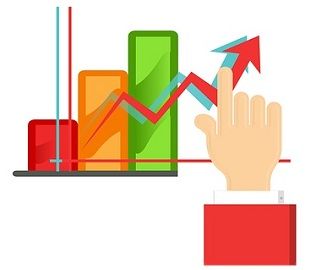How Do You Know if Its Inferential or Descriptive
 In today'southward fast-paced world, statistics is playing a major role in the field of research; that helps in the collection, assay and presentation of data in a measurable form. Information technology is quite hard to identify, whether the research relies on descriptive statistics or inferential statistics, as people normally, lacks knowledge about these two branches of statistics. Every bit the proper name suggests, descriptive statistics is one which describes the population.
In today'southward fast-paced world, statistics is playing a major role in the field of research; that helps in the collection, assay and presentation of data in a measurable form. Information technology is quite hard to identify, whether the research relies on descriptive statistics or inferential statistics, as people normally, lacks knowledge about these two branches of statistics. Every bit the proper name suggests, descriptive statistics is one which describes the population.
On the other end, Inferential statistics is used to make the generalisation about the population based on the samples. Then, there is a big divergence between descriptive and inferential statistics, i.due east. what you practice with your data. Allow'south accept a glance at this commodity to get some more details on the two topics.
Content: Descriptive Statistics Vs Inferential Statistics
- Comparing Chart
- Definition
- Key Differences
- Video
- Conclusion
Comparing Chart
| Basis for Comparison | Descriptive Statistics | Inferential Statistics |
|---|---|---|
| Meaning | Descriptive Statistics is that branch of statistics which is concerned with describing the population under written report. | Inferential Statistics is a type of statistics, that focuses on drawing conclusions nigh the population, on the ground of sample assay and ascertainment. |
| What it does? | Organize, analyze and present data in a meaningful way. | Compares, test and predicts data. |
| Form of concluding Result | Charts, Graphs and Tables | Probability |
| Usage | To describe a state of affairs. | To explain the chances of occurrence of an upshot. |
| Role | Information technology explains the data, which is already known, to summarize sample. | It attempts to accomplish the conclusion to acquire about the population, that extends beyond the data available. |
Definition of Descriptive Statistics
Descriptive Statistics refers to a bailiwick that quantitatively describes the of import characteristics of the dataset. For the purpose of describing backdrop, it uses measures of central tendency, i.e. hateful, median, mode and the measures of dispersion i.e. range, standard departure, quartile departure and variance, etc.
The data is summarised past the researcher, in a useful way, with the help of numerical and graphical tools such equally charts, tables, and graphs, to represent data in an accurate way. Moreover, the text is presented in support of the diagrams, to explain what they correspond.
Definition of Inferential Statistics
Inferential Statistics is all about generalising from the sample to the population, i.e. the results of the analysis of the sample can be deduced to the larger population, from which the sample is taken. It is a user-friendly way to draw conclusions nigh the population when it is non possible to query each and every member of the universe. The sample called is a representative of the entire population; therefore, it should contain important features of the population.
Inferential Statistics is used to decide the probability of properties of the population on the footing of the properties of the sample, by employing probability theory. The major inferential statistics are based on the statistical models such as Analysis of Variance, chi-foursquare test, pupil's t distribution, regression analysis, etc. Methods of inferential statistics:
- Estimation of parameters
- Testing of hypothesis
Cardinal Differences Between Descriptive and Inferential Statistics
The divergence betwixt descriptive and inferential statistics can be drawn clearly on the following grounds:
- Descriptive Statistics is a subject which is concerned with describing the population under study. Inferential Statistics is a type of statistics; that focuses on drawing conclusions about the population, on the footing of sample assay and observation.
- Descriptive Statistics collects, organises, analyzes and presents data in a meaningful fashion. On the contrary, Inferential Statistics, compares information, test hypothesis and make predictions of the time to come outcomes.
- There is a diagrammatic or tabular representation of terminal issue in descriptive statistics whereas the final upshot is displayed in the class of probability.
- Descriptive statistics describes a situation while inferential statistics explains the likelihood of the occurrence of an event.
- Descriptive statistics explains the data, which is already known, to summarise sample. Conversely, inferential statistics attempts to reach the conclusion to learn nearly the population; that extends beyond the data available.
Video: Descriptive Vs Inferential Statistics
Conclusion
So, nosotros take enough discussion on the ii subjects, all yous demand to know is that descriptive statistics is all about illustrating your current dataset whereas inferential statistics focuses on making assumptions on the additional population, that is across the dataset under study. While descriptive statistics provide the summation of the data the researcher has actually studied whereas inferential statistics, makes the generalisation, which ways the information provided to you is not actually studied.
Source: https://keydifferences.com/difference-between-descriptive-and-inferential-statistics.html
0 Response to "How Do You Know if Its Inferential or Descriptive"
Post a Comment